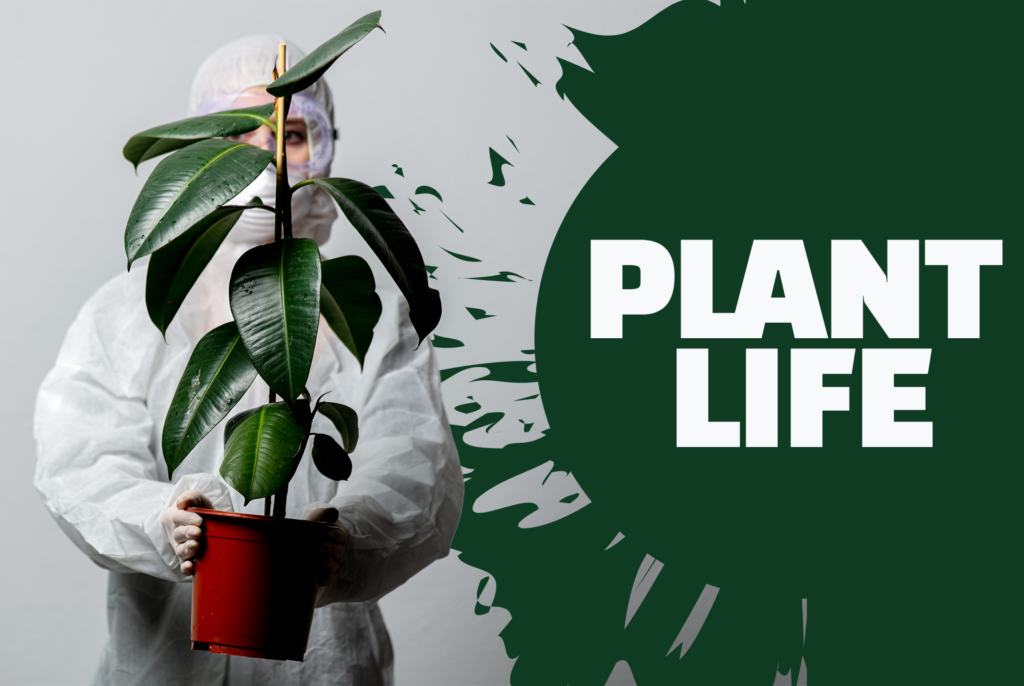Plants are the unsung heroes of life on Earth. They are the foundation of our ecosystems, the engines of oxygen production, and an essential source of sustenance and medicine. Yet, the scientific intricacies of their existence often remain underappreciated. At Plant Life Science, we aim to bridge this gap by exploring the fascinating science behind plants, delving into their evolutionary mysteries, ecological significance, and the countless ways they shape our world.
The Evolutionary Marvel of Flowering Plants
The rise of flowering plants, or angiosperms, is one of the most intriguing chapters in evolutionary history. These plants dominate Earth’s flora, making up approximately 90% of all plant species. But their sudden emergence in the fossil record—termed an “abominable mystery” by Charles Darwin—has long puzzled scientists.
Fossil evidence suggests that flowering plants first appeared around 145 million years ago during the late Jurassic to early Cretaceous period. In just 40 million years, they diversified into an astonishing array of forms. Modern advancements in molecular biology and genetics now help unravel this mystery:
- Polyploidy: This process, where chromosomes double or triple during reproduction, creates genetic diversity, enabling rapid adaptation and speciation.
- Animal Pollination: The co-evolution of flowering plants and their animal pollinators accelerated diversification. Specialized relationships, such as bees with clover or bats with night-blooming flowers, ensured the reproductive success of specific plant species.
- Seed Dispersal: Animal-aided seed dispersal isolated plant populations geographically, leading to the creation of new species.
Today, there are an estimated 300,000–400,000 species of flowering plants, ranging from towering trees like baobabs to delicate orchids.
The Anatomy and Purpose of a Flower
A flower is much more than a pretty decoration. It is a highly specialized reproductive organ designed to ensure the survival of its species. Flowers consist of:
- Male Parts (Stamens): Composed of anthers that produce pollen and filaments that support the anthers.
- Female Parts (Carpels or Pistils): Include the stigma (which receives pollen), the style (a stalk connecting the stigma to the ovary), and the ovary (housing ovules that become seeds upon fertilization).
- Petals and Sepals: These structures attract pollinators with their colors and scents and protect reproductive organs.
Flowers can be classified into:
- Perfect Flowers: Contain both male and female parts (e.g., roses).
- Imperfect Flowers: Have only male or female parts (e.g., corn).
Their vibrant colors, intricate patterns, and aromatic fragrances are evolutionary strategies aimed at maximizing pollination success. For example, red flowers often attract birds, while white, fragrant blooms cater to nocturnal moths.
The Diversity of Flowering Plants
The diversity of angiosperms stems from their interaction with animals and their ability to adapt to various environments. Some extraordinary examples include:
- Rafflesia arnoldii (Corpse Flower): Known for its enormous bloom (over 3 feet wide) and its scent of decaying flesh, which attracts carrion flies for pollination.
- Titan Arum (Amorphophallus titanum): This plant produces the world’s largest inflorescence (a cluster of flowers), growing up to 10 feet tall. It also relies on its putrid odor to lure pollinators.
- Orchids: With over 25,000 species, orchids display remarkable adaptations, such as mimicking insects to trick pollinators.
Plants Beyond Flowers: Mosses, Ferns, and Conifers
Flowering plants are only part of the plant kingdom’s incredible diversity. Non-flowering plants like mosses, ferns, and conifers play crucial roles in ecosystems:
- Mosses: These pioneers of barren landscapes help prevent soil erosion, retain moisture, and create habitats for microorganisms.
- Ferns: As spore-producing plants, ferns recycle nutrients and support forest biodiversity.
- Conifers: These ancient gymnosperms, such as pines and spruces, dominate cold climates and serve as major carbon sinks.
Each group has a unique life cycle and ecological function, showcasing the ingenuity of plant evolution.
Adaptation and Survival: The Science of Plant Strategies
Plants are masters of adaptation, capable of surviving in extreme environments through remarkable strategies:
- Drought Resistance: Anthocyanins, pigments responsible for red or purple coloration, help some plants withstand high heat and limited water availability.
- Carnivory: Plants like Venus flytraps and pitcher plants thrive in nutrient-poor soils by consuming insects.
- Symbiosis: Many plants form partnerships with fungi (mycorrhizae) or bacteria (nitrogen-fixing rhizobia) to enhance nutrient uptake.
These adaptations underscore the resilience and resourcefulness of plants.
Why Plants Matter: A Call to Action
Understanding plants isn’t just an academic exercise—it’s essential for addressing some of humanity’s greatest challenges:
- Food Security: By studying crop plants and their wild relatives, scientists can develop more resilient, productive varieties.
- Climate Change: Plants sequester carbon dioxide, mitigate climate change, and protect ecosystems from degradation.
- Medicinal Uses: Plants provide the raw materials for countless medicines, from aspirin (derived from willow bark) to cancer-fighting compounds like paclitaxel.
Protecting plant diversity is critical for sustaining life on Earth. Deforestation, habitat loss, and climate change threaten countless plant species, and with them, the ecosystems and human livelihoods they support.
Join Us in Exploring the Plant Kingdom
At Plant Life Science, we aim to ignite curiosity and foster understanding of the intricate world of plants. Our blog will cover a wide range of topics, including:
- The role of photosynthesis in global oxygen cycles.
- The secrets of plant communication and signaling.
- Sustainable gardening tips for urban and rural settings.
- Cutting-edge research in plant genetics and biotechnology.
- The cultural and historical significance of plants in human societies.
Together, let’s unlock the mysteries of the plant kingdom and celebrate the beauty and science of these extraordinary organisms. Stay tuned for deep dives, fascinating discoveries, and actionable insights that will change the way you view the natural world.
Plants are the quiet architects of life on Earth. Let’s give them the recognition they deserve.

Hi, this is a comment.
To get started with moderating, editing, and deleting comments, please visit the Comments screen in the dashboard.
Commenter avatars come from Gravatar.